Brown Cockroaches
- Article
- Brown Cockroaches
Brown Cockroaches
Scientific Name: Periplaneta brunnea
How to identify Brown Cockroaches
Brown cockroaches are large species of cockroaches. They are about 3-4 cm long and have wings. They are dark, reddish brown in colour. The brown cockroaches can be distinguished from American cockroaches by observing their cerci, which are two pointed barbs, or spines, near the posterior end of some cockroaches. Brown cockroaches have a pair of blunt, short and dark cerci while American cockroaches have longer and sharp pointed cerci.
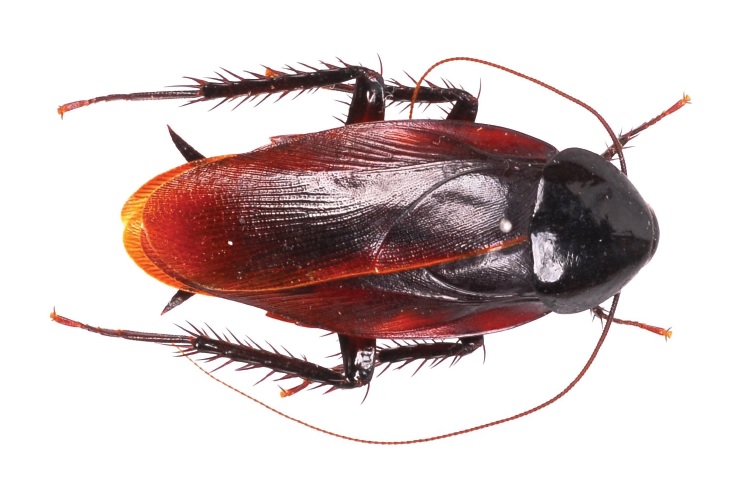
Where are cockroaches commonly found?
Cockroaches prefer warm, moist areas which remind them of their tropical origins. In a kitchen, they can be found in places that provide warmth, food & moisture so a dishwasher is prime real estate as far as they are concerned. When such desirable habitats are fully occupied, they start to move out to less suitable environments.
Why are cockroaches considered pests?
Cockroaches are probable carriers of a number of debilitating diseases including salmonellosis, dysentery, typhoid, hepatitis and tuberculosis. There is no unequivocal proof that cockroaches are disease carriers unlike in the case of rodents and flies but, it doesn’t take much imagination to conjure up the image of them crawling through drains and sewers and then scuttling across the speciality of the house!
What is possibly more disturbing to families is the fact that people can become allergic to cockroaches and their faeces. “This allergic reaction is a worldwide phenomenon, with sensitivity to cockroaches ranging from 23–60% of the population tested. There seems to be a particular association between cockroach allergens and asthma but they can also cause rhinitis and dermatitis. The allergens are potent sensitisers of children and exposure to cockroach allergens early in life has been found to be a predictor for the development of asthma."
On commercial premises, the presence of cockroaches contravenes health regulations and could result in a significant fine.
What is the biology and lifecycle of cockroaches?
Cockroaches undergo an incomplete (or gradual) metamorphosis with the juvenile stages being similar in appearance to the adult form, apart from the presence of wings. Female cockroaches produce an egg case (ootheca) after mating and they either deposit this sometime before or immediately prior to the baby (nymph) cockroaches emerging. According to the species involved, there are a number of juvenile stages lasting from six to twelve months. Adults can live from three to twelve months. Juveniles and adults are found living together in aggregations with up to 75% of the aggregation consisting of juveniles. All stages have similar mouthparts and feed upon identical foods.
Management Tips for Brown Cockroaches
Steps for controlling cockroach populations
-
Site Evaluation: Carry out a risk assessment and site evaluation. Look for evidence of cockroach activity such as live or dead insects, cast nymphal skins, egg cases, droppings, regurgitation marks and you can even smell them out if there are quite a few of them. Carry out the inspection in a systematic manner from left to right or vice versa depending upon your preference.
-
Do not use an aerosol as a flushing agent as this merely disperses them and makes subsequent control efforts much more difficult. Look for locations that provide warmth, moisture, food and shelter such as dishwashers, refrigerator motors, microwaves and coffee machines. Do not neglect any possible harbourage as adult German cockroaches can hide in a gap less than 2 millimetres high. Look for hygiene and proofing issues that may contribute to the pest problem. Write them down and detail any recommended actions.
-
Treatment: When you are aware of all actual and potential harbourage areas, apply your insecticide. There can be nobody in the vicinity while you are working and you may need to put out warning signs. Refer to the NSW WorkCover publication, “Safe Use of Pesticides Including Herbicides in Non-Agricultural Workplaces Code of Practice 2006” for detailed information on relevant safety precautions.
-
After Treatment: After the treatment, you should evaluate the situation. Walk around and re-inspect. You will need to stoop to look under fittings and you may need your ladder to look up high. You may need to apply additional insecticides or knock them down with an aerosol. Are there any liquid or dust puddles? You will need to remove those before the client re-enters. Place cockroach glue traps in the worst harbourage areas. These will give you valuable information when you return. If there are lots of cockroaches stuck on them, you will need to do another thorough treatment. After completing the necessary paperwork, take another look around. Is there anything you may have missed? Detail any client recommendations regarding hygiene and proofing. Tell them how important it is for an integrated pest management programme that all these recommendations are acted on. Don’t be surprised if your recommendations are not promptly actioned.
-
Servicing Intervals: Now that you have completed the initial treatment, you will need to return to ensure that the results are satisfactory. In your quotation, you will have noted any follow-ups and service intervals. Always make at least one follow-up visit after ten to fourteen days. Check your glue boards to see if there is any fresh activity. If there is, you will need to re-treat and come back again a week later to check the results. You should never leave a site if you think that live cockroaches are still there unless you have applied gel to those areas. For most food facilities e.g. restaurants, hotels and food manufacturers, at least a monthly service is required. Some sites have weekly or even twice weekly visits. With other non-food sites, a quarterly service may be all that is required. With domestic premises, your service schedule is more flexible. Some companies provide three or six-month free service periods. With experience, you will be able to decide on service intervals with more precision.
Chemicals Required to Control Brown Cockroaches
Chemicals required to treat and control cockroach populations
If you start a job thinking that an insecticide will do all the work for you, then you and your client will be disappointed. To manage and control cockroach populations, you need to work in a diligent, systematic fashion. Please see our list of recommended insecticides to assist with the treatment of cockroaches below. The standard types of insecticides for a cockroach eradication job should include:
-
Two residual insecticides (with different modes of action),
-
An insecticidal dust,
-
An Insect Growth Regulator,
-
An aerosol with an applicator nozzle,
-
Two cockroach gels (with different modes of action), and for big jobs.
For a heavy infestation, you will achieve better and quicker results if you apply a liquid insecticide with added insect growth regulator and treat any voids or cavities with an insecticidal dust. Some pest managers rely almost exclusively on cockroach gel as their one and only method of treatment and these products are effective control agents. However, they are not rapid acting and it may be some days before results are noticed. For initial treatments, a liquid residual insecticide plus dust will give faster, more impressive results. You will need a crack and crevice/borer nozzle and apply the spray with a low pressure into harbourages. It is not wise to spray skirting boards/carpet edges as has been the custom of some pest managers in the past. This procedure is not productive and may lead to staining of surfaces. Always prepare and apply insecticides according to label requirements.
You can apply dusts to voids and cavities where it will not be blown onto foodstuffs, food handling surfaces or cooking utensils. It must be applied lightly or the cockroaches will avoid it. Do not apply it in areas which will become wet. Dust can be applied to enclosed roof voids or sub-floors where it will not contaminate any stored materials.
Cockroach gels are relatively new on the scene having appeared only in the last 20 years. They are cost effective and provide excellent results when used according to label instructions relating to “dot” size and spacing. They should be applied with a proper gel gun not just squeezed from the tube. Many pest managers use gels to the exclusion of all other formulations and there is nothing wrong with that approach but, as mentioned prior, they will provide slower results. Other pest managers only use gels to treat harbourages where liquids or dusts may cause problems e.g. electronic equipment. This is a more economical approach.
PRODUCT SOLUTIONS
-
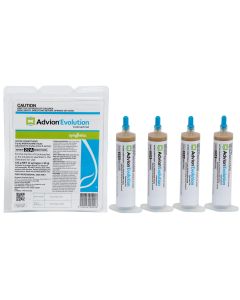 Advion Evolution Cockroach Gel8 g/kg indoxacarb
Advion Evolution Cockroach Gel8 g/kg indoxacarbAdvion Evolution Cockroach Gel is an indoxacarb-based bait that features a new attractive bait matrix with improved palatability to ensure increased bait consumption and improved speed of kill.
-
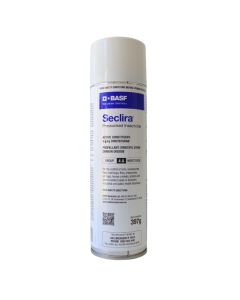 Seclira Pressurised Insecticide 397g5g/kg Dinotefuran
Seclira Pressurised Insecticide 397g5g/kg DinotefuranSeclira Pressurised Insecticide is a fast-acting, non-repellent, ready-to-use product with System III compatibility for the control of a broad range of pests including ants, and cockroaches.
-
 Maxforce Fusion Cockroach Gel21.5g/kg Imidacloprid
Maxforce Fusion Cockroach Gel21.5g/kg ImidaclopridMaxforce® Fusion is the next generation gel against cockroaches large and small. Incorporating for the first time, a patented fusion technology (Total Life Cycle Control or TLC control), incorporating a feeding stimulant and capsule technology within the gel matrix (blue beads).
-
 Maxforce Gold Cockroach Gel0.3g/kg Fipronil
Maxforce Gold Cockroach Gel0.3g/kg FipronilMaxforce Gold Cockroach gel is a fipronil based gel formulation for control of cockroaches in residential and commercial areas by professional pest control operators.
-
 Maxforce Activ Cockroach Gel (3 Pack)10g/kg Clothianidin
Maxforce Activ Cockroach Gel (3 Pack)10g/kg ClothianidinMaxforce Activ Cockroach Gel is the latest gel, in the line of ‘new generation’ cockroach control products. Trials suggest that Maxforce Activ Cockroach Gel placements remain palatable for at least 12 months. Incorporating the patented blue bead feeding stimulant technology to ensure Total Life Cycle control (TLC).
-
 Perigen Defence 500EC Residual Insecticide500g/L Permethrin
Perigen Defence 500EC Residual Insecticide500g/L PermethrinPerigen Defence 500 Residual Insecticide is registered for the control of cockroaches, spiders, fleas, ants and more in domestic and commercial situations.
-
 Coopex Dust Insecticidal Dusting Powder10g/kg Permethrin
Coopex Dust Insecticidal Dusting Powder10g/kg PermethrinCoopex Dust Insecticidal Dusting Powder is registered for the control of cockroaches, ants, fleas, silverfish and bed bugs in and around domestic and industrial premises, food preparation and storage areas. Also for control of mushroom flies in mushroom housing and bees in wall cavities.
-
 Biflex Aqua Max Insecticide and Termiticide100g/L Bifenthrin
Biflex Aqua Max Insecticide and Termiticide100g/L BifenthrinBiflex AquaMax is the first ever Professional Strength, multi-insecticide and termiticide. Effective on a wide range of common household pests and all termite species in Australia.
-
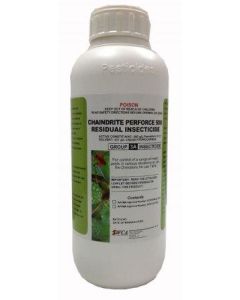 Chaindrite Perforce 500 Residual Insecticide500 g/L Permethrin
Chaindrite Perforce 500 Residual Insecticide500 g/L PermethrinChaindrite Perforce 500 Residual Insecticide is formulated for the control of a broad range of insects in various situations as per the Directions for Use table.
-
 Clear Out Commercial Cockroach Bait 2x30g0.5g/kg Fipronil
Clear Out Commercial Cockroach Bait 2x30g0.5g/kg FipronilClearout Commercial Cockroach Bait has been formulated with a unique food matrix and 0.5g/kg Fipronil in a white aesthetic color for sensitive areas. It is highly palatable to cockroaches and can be used as a crevice, crack or spot treatment. for the control of cockroach infestation including German and other common cockroaches in commercial and domestic situations.
-
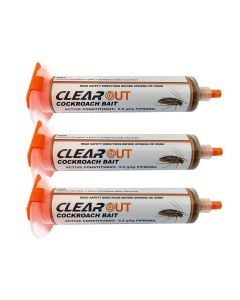 Clear Out Cockroach Bait 3 x 30g0.5g/kg Fipronil
Clear Out Cockroach Bait 3 x 30g0.5g/kg FipronilClear-Out Cockroach Bait is a crevice, crack or spot treatment formulated with a unique food matrix and the active ingredient 0.5g/kg Fipronil. It can be used control cockroach infestation including German and other common cockroaches in commercial, domestic and public service buildings.
-
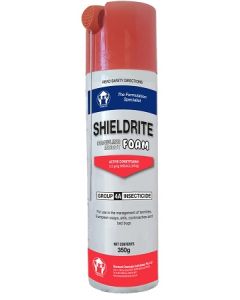 Shieldrite Crawling Insect Foam 350g0.5g/kg Imidacloprid
Shieldrite Crawling Insect Foam 350g0.5g/kg ImidaclopridShieldrite Crawling Insect Foam is a non repellent suspension concentrate formulated into a ready to use foam for the use in the management of pest insects including Termites, European wasps, Ants, Cockroaches and Bed bugs.
-
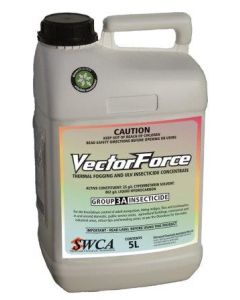 Vectorforce ULV and Thermal Fogging Insecticide 5L25g/L Cypermethrin Solvent
Vectorforce ULV and Thermal Fogging Insecticide 5L25g/L Cypermethrin SolventVectorforce Thermal Fogging and ULV Insecticide Concentrate is formulated for the knockdown control of adult mosquitoes, biting midges, flies and cockroaches.
Out of stock -
 Ensnare Pro 50SC Insecticide 1L50g/L Indoxacarb
Ensnare Pro 50SC Insecticide 1L50g/L IndoxacarbEnsnarePRO is a non-repellent residual suspension concentrate spray. It can be used in conjunction with baits without reducing the performance of the bait. Ants, cockroaches and flies don’t know it’s there. The ‘non-repellent’ properties of this formulation does not interfer with insects natural behaviour...
-
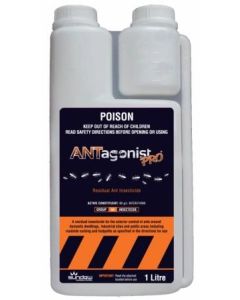 Antagonist Pro Insecticide80g/L Bifenthrin
Antagonist Pro Insecticide80g/L BifenthrinANTagonist PRO insecticide is a suspension concentrate formulation containing a Polymer Enhanced Synthetic Pyrethroid approved for the treatment of ants, spiders, wasps, cockroaches, mosquitoes, midges, fleas, flies, ticks, termites and turf pests including lawn armyworms, sod webworms, argentine stem weevil, billbug, African black beetle, ants and ornamental pest including mites, aphids, caterpillars, loopers, earworm, budworm, light brown apple moth, whitefly, mealybug, thrips and cutworms.
-
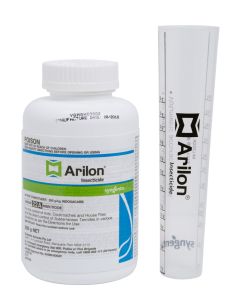 Arilon Insecticide200g/kg Indoxacarb
Arilon Insecticide200g/kg IndoxacarbArilon is a non-repellent insecticide which provides excellent control of ants, cockroaches and other key insect pest species on a variety of interior and exterior surfaces. With its powerful active ingredient and wide-ranging application, Arilon delivers exceptional results against ants, cockroaches, houseflies, and termites—indoors, outdoors, and on various surfaces. Its flexibility and superior efficacy make it indispensable for commercial and domestic pest control programs.
-
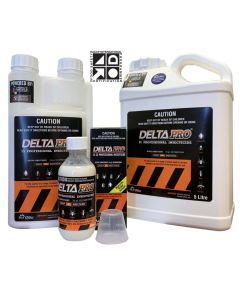 Delta Pro 25SC Professional Insecticide25g/L Deltamethrin
Delta Pro 25SC Professional Insecticide25g/L DeltamethrinFor the control of a range of insect pests such as spiders, cockroaches, flies, ants, mosquitoes in various situations.
-
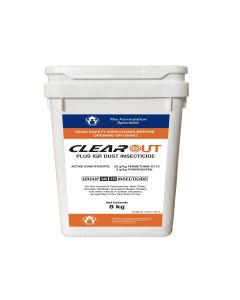 Clear Out Plus IGR Dust Insecticide 8kg Bucket20g/kg Permethrin, 2g/kg Pyriproxyfen
Clear Out Plus IGR Dust Insecticide 8kg Bucket20g/kg Permethrin, 2g/kg PyriproxyfenClearOut Plus IGR Dust Insecticide is a dual active dustable powder containing Permethrin and Pyriproxyfen for the control of adult and juvenile insects. ClearOut Plus IGR Dust Insecticide is formulated as a light, dustable powder featuring two modes of action in one application to provide a quick knockdown combined with a juvenile insect hormone regulator to stop the breeding life cycle.
-
 Starycide Insect Growth Regulator (IGR)48 g/L triflumuron
Starycide Insect Growth Regulator (IGR)48 g/L triflumuronStarycide is an insect growth regulator (IGR) registered for the control of silverfish, immature fleas and cockroaches in indoor and outdoor situations, and container breeding mosquitoes outdoors.
-
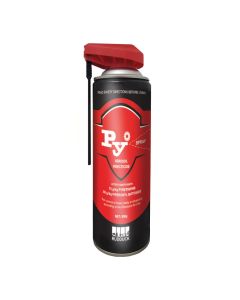 PY Spray Aerosol Insecticide10 g/kg pyrethrin and 50 g/kg piperonyl butoxide
PY Spray Aerosol Insecticide10 g/kg pyrethrin and 50 g/kg piperonyl butoxidePY Spray Aerosol Insecticide is a ready to use professional aerosol for control of a range of insect pests in various situations. Suitable for crack and crevice applications. PY Spray Aerosol Insecticide is an industrial strength spray, suitable for flushing or as a space spray.
-
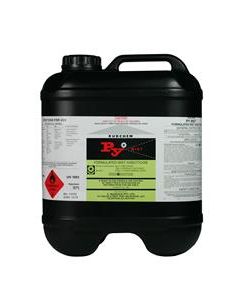 PY Fog Insecticide4g/L Pyrethrins, 12g/L Piperonyl Butoxide
PY Fog Insecticide4g/L Pyrethrins, 12g/L Piperonyl ButoxidePY Fog is a ready to use, broad spectrum insecticide for the control of a range of insect pests in various situations using a thermal fogging machine.
-
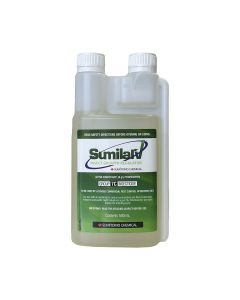 Sumilarv Insect Growth Regulator (IGR) Insecticide 500mL20 g/L Pyriproxyfen
Sumilarv Insect Growth Regulator (IGR) Insecticide 500mL20 g/L PyriproxyfenSumilarv Insect Growth Regulator is registered for use with an adulticide to control cockroaches and fleas in domestic, industrial and public health situations.
-
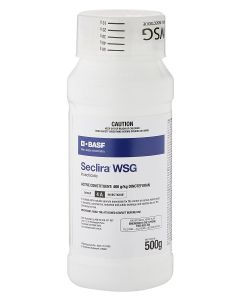 Seclira WSG Insecticide400g/kg Dinotefuran
Seclira WSG Insecticide400g/kg DinotefuranSeclira® WSG insecticide is a non-staining, odourless, broad spectrum, general insect control product for indoor and outdoor use.
-
 Advion Cockroach Gel8g/kg Indoxacarb
Advion Cockroach Gel8g/kg IndoxacarbAdvion Cockroach Gel is a highly palatable gel bait targeting all pest species of cockroaches. It is powered by Indoxacarb which has a unique mode of action allowing for the primary, secondary and tertiary control of cockroaches. Advion has excellent environmental and toxicological profiles and Indoxacarb has gained ‘reduced risk‘ classification.
-
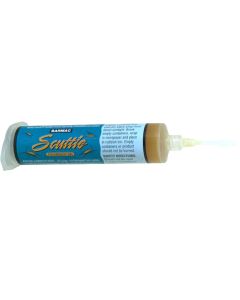 Scuttle Cockroach Gel20g/kg Hydramethlynon
Scuttle Cockroach Gel20g/kg HydramethlynonScuttle Cockroach Gel is a ready-to-use gel formulation for the control of cockroaches in domestic, commercial and warehousing premises. Scuttle Cockroach Gel can be used as a high-attractive bait targeting problem cockroaches.
-
 Suspend Flexx Insecticide25g/L Deltamethrin
Suspend Flexx Insecticide25g/L DeltamethrinSuspend Flexx Insecticide is a synthetic pyrethroid (3A) formulation for the knockdown and residual control of a range of insect pests in various indoor and outdoor situations.
-
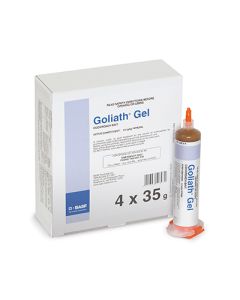 Goliath Cockroach Gel Bait (4 x 35g)0.5g/kg Fipronil
Goliath Cockroach Gel Bait (4 x 35g)0.5g/kg FipronilGoliath Cockroach Gel Bait provides complete, lasting and cost-effective cockroach control in a palatable, potent, economical and convenient gel form.
One bait per square metre of Goliath is potent enough to quickly eliminate an active colony and go on protecting the area for up to three months. With over a thousand bait placements in every tube, Goliath provides large economical coverage that’s easy to apply.
-
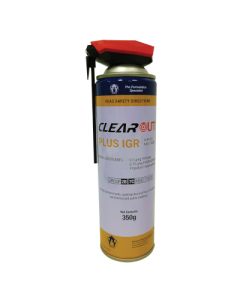 Clear Out Plus IGR Aerosol Insecticide 350g0.5g/kg Fipronil, 0.15g/kg Pyriproxyfen
Clear Out Plus IGR Aerosol Insecticide 350g0.5g/kg Fipronil, 0.15g/kg PyriproxyfenClear Out Plus IGR Aerosol Insecticide is a residual surface crack & crevice or spot treatment for control of ants, cockroaches and flies in domestic, commercial and public buildings.
-
 Killgerm AF Cockroach & Crawling Insect Monitor Glue Pads (Pack of 100)Replacement Glue Pads
Killgerm AF Cockroach & Crawling Insect Monitor Glue Pads (Pack of 100)Replacement Glue PadsThe Killgerm AF Cockroach & Crawling Insect Monitor Glue Pads are premium replacement glueboards designed to enhance the effectiveness of the AF monitoring stations. These high-quality glue pads are infused with powerful attractants to lure a variety of crawling insects, including cockroaches and silverfish, ensuring accurate and reliable pest monitoring.
-
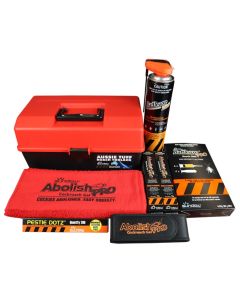 Sundew Aussie Tuff Roach BoxThe Sundew Aussie Tuff Roach Box kit contains Abolish PRO Cockroach Gel, BattleaxePRO cockroach gel, BattleaxePRO Aerosol, Pestie Dotz for accurate clean application of gels, AbolishPRO sports towel and an AbolishPRO tactical holster to carry your gel at all times
Sundew Aussie Tuff Roach BoxThe Sundew Aussie Tuff Roach Box kit contains Abolish PRO Cockroach Gel, BattleaxePRO cockroach gel, BattleaxePRO Aerosol, Pestie Dotz for accurate clean application of gels, AbolishPRO sports towel and an AbolishPRO tactical holster to carry your gel at all times -
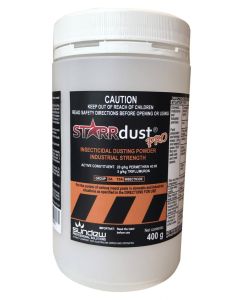 Starrdust PRO One-Shot Insecticidal Dust 400g20g/kg Permethrin, 5g/kg Triflumuron
Starrdust PRO One-Shot Insecticidal Dust 400g20g/kg Permethrin, 5g/kg TriflumuronThe Starrdust PRO One-Shot Insecticidal Dust 400g is an industrial-strength dust designed for use with the Starrdust PRO Duckbill Duster. It is a ready-to-use broad-spectrum insecticide with a unique formulation. It controls a wide range of insect pests including cockroaches, silverfish, spiders, ants, fleas, carpet beetles, bed bugs, European wasps, feral honey bees, bird mites, subterranean termites, hide beetles, millipedes, woodlice and clothes moths.
-
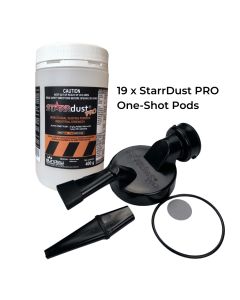 Starrdust PRO One-Shot Insecticidal Dust 19 x 400g + Duckbill20g/kg Permethrin, 5g/kg Triflumuron
Starrdust PRO One-Shot Insecticidal Dust 19 x 400g + Duckbill20g/kg Permethrin, 5g/kg TriflumuronA convenient kit of 19 x Starrdust PRO One-Shot Insecticidal Dust 400g Pods and a bonus Duckbill Duster. StarrDust PRO is an industrial-strength dust designed for use with the Starrdust PRO Duckbill Duster. It is a ready-to-use broad-spectrum insecticide with a unique formulation. It controls a wide range of insect pests including cockroaches, silverfish, spiders, ants, fleas, carpet beetles, bed bugs, European wasps, feral honey bees, bird mites, subterranean termites, hide beetles, millipedes, woodlice and clothes moths.
-
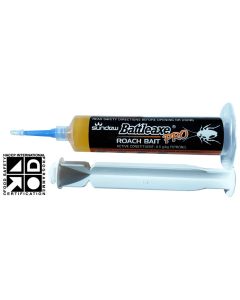 Battleaxe Pro Roach Bait (4 x 20g Pack)0.5 g/kg Fipronil
Battleaxe Pro Roach Bait (4 x 20g Pack)0.5 g/kg FipronilBattleaxe Pro Roach Bait Gel is a ready-to-use, high-performance, broad-spectrum cockroach gel bait utilising the powerful active fipronil. Highly palatable across all species small and large, this bait entices immediate feeding through a unique bait matrix.
-
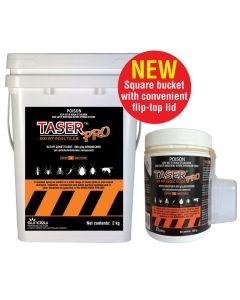 Taser Pro 800 WP Insecticide800g/L Bendiocarb
Taser Pro 800 WP Insecticide800g/L BendiocarbTaser Pro Insecticide is a residual broad spectrum non-repellent spray for the control of a wide range of insect pests in domestic, farm, agricultural, industrial, commercial and public service buildings.
-
 Tempo Residual Insecticide 1L25 g/L betacyfluthrin
Tempo Residual Insecticide 1L25 g/L betacyfluthrinTempo Residual Insecticide is a fast-acting, knock-down, broad-spectrum insecticide for general insect control in domestic and commercial situations, as well as for the control of pest insects of turf and ornamental plants.
-
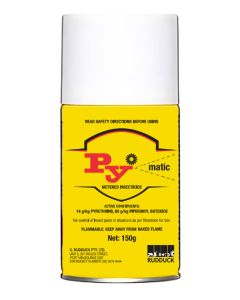 PyMatic Metered Aerosol Insecticide14g/kg Pyrethrins and 60g/kg Piperonyl Butoxide.
PyMatic Metered Aerosol Insecticide14g/kg Pyrethrins and 60g/kg Piperonyl Butoxide.PyMatic Metered Insecticide is registered for use in automatic aerosol dispensers for total insect control in enclosed areas. Py Matic aerosol will dispense approx. 3,000 metered sprays and provide control for up to 30 days.
-
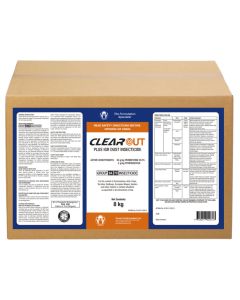 Clear Out Plus IGR Dust Insecticide 8kg Carton20g/kg Permethrin, 2g/kg Pyriproxyfen
Clear Out Plus IGR Dust Insecticide 8kg Carton20g/kg Permethrin, 2g/kg PyriproxyfenClearOut Plus IGR Dust Insecticide is a dual active dustable powder containing Permethrin and Pyriproxyfen for the control of adult and juvenile insects.
-
 Killmaster Zero Pest Insecticide Strip 65g
Killmaster Zero Pest Insecticide Strip 65gKillmaster Zero Pest Strip is a highly effective, long-lasting solution for managing a wide range of flying and crawling insect pests, including cockroaches, moths, silverfish, ants, and flies. Designed for non-living areas such as storage spaces, store rooms, and industrial bins, this pest strip provides hassle-free protection for up to 4 months.
Out of stock -
 Clear Out IGR Dust Insecticide Pods (11 Pods x 350g)20g/kg Permethrin, 2g/kg Pyriproxyfen
Clear Out IGR Dust Insecticide Pods (11 Pods x 350g)20g/kg Permethrin, 2g/kg PyriproxyfenClearOut IGR Dust Insecticide Pods bring the proven performance of ClearOut Plus IGR Insecticide Dust into a compact, easy-to-use 350g pod. Designed for professional pest controllers, these pods eliminate the hassle of decanting — simply screw your duster directly onto the pod using the adaptor and start applying.
JOIN OUR NEWSLETTER NOW!
Be the first to hear about the latest specials, products, tips and ideas.

